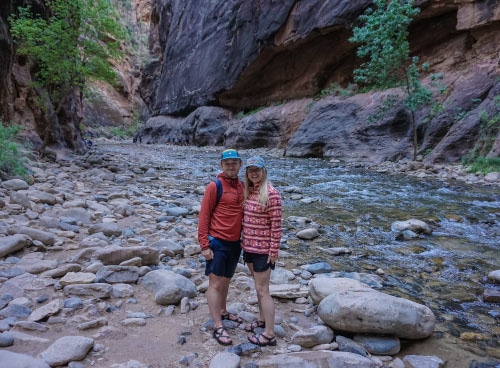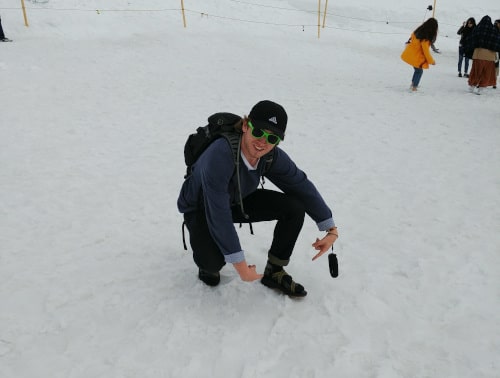Have you ever been hiking in trail runners on a hot, dusty trail and still felt like your feet were suffocating? Me too, and I’d bet money that a lot of other people have had the same problem.
Enter: sandals. Switching from boots to trail runners is a foot-freeing step, so why shouldn’t switching to sandals be even better? And if so, are there any caveats or things you should worry about? These are questions I get asked all the time, probably because for a couple of years now I’ve been a big fan of hiking in Chacos (and people are often baffled when they see me doing it).
I think Chacos are generally great, but only in the right circumstances. After trying them on every hike I could think of, I’ve figured out where they belong and where they don’t. So if you’re looking to make a switch, here are some key things to consider.
Note: As an Amazon associate I earn from qualifying purchases. If you click through one of the links on this page and make a purchase, we receive a small commission at no extra cost to you. It helps keep us up and running and able to continue to provide great content. 🙂
Pros And Cons

Before I talk about the situations I think they're best in, I want to outline the reasons for and against hiking in Chacos (or any sandal) in the first place.
Pros:
- Ultra-breathable
- No need for separate water-crossing shoes
- Durable
- Comfortable
- Very good arch support
- The tan lines/Chaco aesthetic (a very real pro for many 😉 )
Cons:
- Possible toe-stubbing
- Blister-prone
- Rocks can get stuck under your feet
- Foot sunburns (learned that one the hard way)
For many people including myself, the pros outweigh the cons in a lot of situations. But to figure out whether you should use them, you should also ask yourself these questions.
Are Your Feet Broken In?
First and foremost, your feet need to be adapted to Chacos before you go on long hikes in them. That means wearing them as often as you can; to the grocery store, walking your dog, and even to work if possible. The more exposure you get before hiking in them, the better.
The reason is that although Chacos are very good at creating a comfortable fit, they still rub your feet in specific spots. Hiking up and down puts a lot more pressure on these spots than regular walking, so if you haven’t prepped your feet you could end up with some of the worst blisters of your life.
Is The Trail Well-Maintained?
What ‘well maintained” means will vary from person to person. The important thing is to make sure you know what you’re getting into and think about whether Chacos are the right choice. In general it’s best to avoid:
- Lot’s of blowdowns or brush (foot cuts suck)
- Really gravelly trails (rocks can get under your feet)
- Anywhere cactus thorns are prolific
Notice that I didn’t rule out cold weather. One cool thing about hiking in Chacos is that if you need to you can lay the toe strap flat and wear socks. Here’s a picture of me doing exactly that at the Jungfraujoch in Switzerland (full disclosure: I took the train here, but my feet were still nice and comfortable the whole time).

What Are The Distance and Grade?
Many people do full thru-hikes wearing only Chaco’s, so when it comes to distance, the sky's the limit. But realistically, most people won’t be able to hike that far in them. Unless you’re really committed, even broken in feet start to get blistered after a while. It’s best to start with short hikes to see how your feet do and progress from there.
A steep grade can also exacerbate blisters immensely. All the forward pressure from walking downhill is put on just a few points, so even short downhills can cause pretty serious problems. This is another one of those things that gets better with time, but just make sure you plan ahead and avoid hikes with steep downhills at least at first.
Recommendation
Overall I love hiking in Chacos. My feet feel free, and I love being able to take off and put on shoes without having to worry about dirt and stuff getting in my socks. Plus, nothing feels better than charging straight through a cool creek on a hot summer day without having to switch shoes first.
If you’re going to do it though, I would highly recommend you go with the Chaco Z/2’s (the kind with the toe strap). The toe strap provides the kind of foot security you need for hiking. Chaco has the “Classic” and the “Cloud” options, the former being the hard, tough, original rubber sole, and the latter being a much cushier version of that. The choice is ultimately up to you (I use wear the classic), although the Cloud may be more comfortable if you plan on pushing miles. Here are links to the Classic version, in men's and women's, and Cloud version, in men's and women's.
If it might be cold or you want a little extra protection, Chacos work great with Injinji toe socks. They can also help the break-in period, and they’re just nice to have around in case you want to use them. I’d highly recommend picking up a pair of them as well.
Any other questions or Chaco hiking tips? let me know in the comments below.
